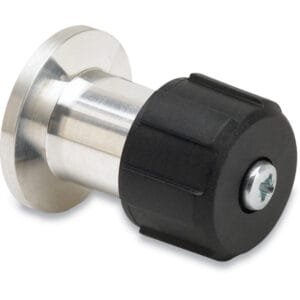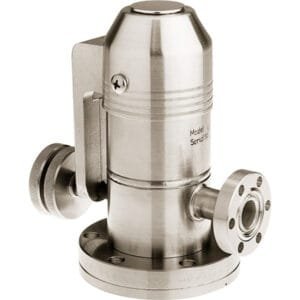KF (QF) HV Brass Braze Flanges: Economical and Reliable KF Connections for High-Vacuum Systems
KF (QF) HV Brass Braze Flanges are versatile components designed to deliver dependable KF-style vacuum connections in systems that use copper or brass tubing or require non-welded attachment methods. These flanges are ideal for high-vacuum (HV) plumbing tasks in general-use systems, offering a reliable, brazable interface that can be easily integrated into foreline assemblies, chamber flanges, or instrumentation ports.
Manufactured from high-quality brass, KF (QF) HV Brass Braze Flanges combine mechanical stability with cost efficiency. Brass is particularly well-suited for applications where full stainless-steel components may be unnecessary, or where thermal conductivity and ease of joining via brazing are preferred. These flanges are widely used in experimental vacuum setups, R&D environments, and OEM assemblies that balance performance and material cost.
The KF (QF) flange integrated into each KF (QF) HV Brass Braze Flange follows the industry-standard sexless KF design, making it fully compatible with other KF flanges, centering rings, and clamps. This modularity simplifies assembly and reduces system complexity. The sealing mechanism consists of a rubber or elastomeric o-ring mounted in a centering ring. When clamped between two flanges, the o-ring compresses and forms a vacuum-tight seal capable of withstanding pressures as low as 10⁻⁸ torr.
KF (QF) HV Brass Braze Flanges feature a chamfered back surface to ensure proper alignment and even o-ring compression during installation. The flange can be quickly secured using any standard KF clamp—be it wing-nut, thumbscrew, over-center lever, or bolt-type mechanisms—allowing for tool-free maintenance and fast configuration changes.
Unlike weld flanges, which require high-precision welding processes, brass braze flanges are engineered specifically for brazing. This makes them an excellent choice for vacuum systems that involve copper piping or thin-walled tube assemblies, where brazing ensures leak-free joints without introducing thermal distortion or the high heat zones typical of welding.
KF (QF) HV Brass Braze Flanges are constrained by the o-ring’s thermal and chemical limits, like all KF-based fittings. They are suitable for vacuum operations within the range of 0 °C to approximately 120–180 °C, depending on the o-ring material, and support full vacuum conditions from atmospheric pressure down to 10⁻⁸ mbar.
TFM offers KF (QF) HV Brass Braze Flanges in standard KF sizes, including KF16, KF25, KF40, and KF50, allowing engineers and technicians to build out complete vacuum systems using industry-standard components. These flanges can be brazed directly to copper, brass, or plated tube assemblies, and are also available with optional custom machining for specific installation needs.
In summary, KF (QF) HV Brass Braze Flanges provide a reliable, cost-effective solution for connecting brazed copper or brass components to KF-based vacuum systems. Their compatibility, sealing performance, and brazing convenience make them a preferred option in general high-vacuum environments where versatility and value are essential.
Ordering Table
Accessories Table
| Description | For | Per Package | VacuCADSM | Part Number | Price | In Stock | Add Item |
| Cast Clamps (Aluminum) | KF10, KF16 Flanges | 1 | (please log in) | QF16-075-C | $6.95 | ||
| Cast Clamps (Aluminum) | KF25 Flanges | 1 | (please log in) | QF25-100-C | $8.80 | ||
| Cast Clamps (Aluminum) | KF40 Flanges | 1 | (please log in) | QF40-150-C | $10.15 | ||
| Cast Clamps (Aluminum) | KF50 Flanges | 1 | (please log in) | QF50-200-C | $16.60 | ||
| Lever Clamps (Aluminum) | KF10, KF16 Flanges | 1 | N/A | QF16-075-CHA | $52.85 | ||
| Lever Clamps (Aluminum) | KF25 Flanges | 1 | N/A | QF25-100-CHA | $75.00 | ||
| Lever Clamps (Aluminum) | KF40 Flanges | 1 | N/A | QF40-150-CHA | $87.65 | ||
| Description | For | Per Package | VacuCADSM | Part Number | Price | In Stock | Add Item |





Reviews
There are no reviews yet.